Star Trek has a history of challenging racial and ethnic stereotypes, yet gender stereotypes seem to persistently appear in the franchise into the modern era. From the male command bias in many of the early series to how many women are written through gender-specific lenses, Star Trek episodes can reveal subtle and other not-so-subtle gender stereotypes. Does this imply that even as other stereotypes are overturned, gender stereotypes will follow Starfleet into space?
Please note that this is not an exhaustive examination of every character where gender stereotypes seemed to harm the character, but some of the ones that I found most troubling, plus a few highlights of characters who were written with more complexity. I want more of these when the strikes end.
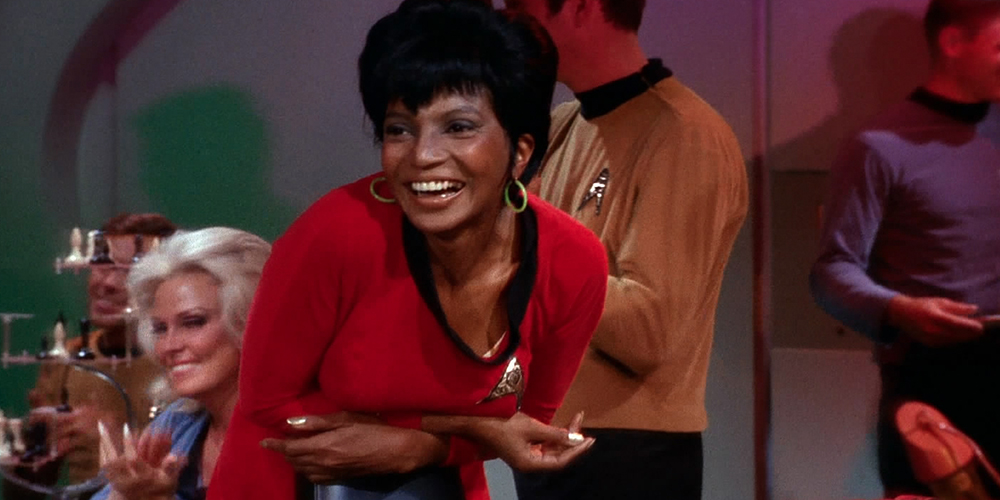
Uhura’s groundbreaking characterization—talented, polyglot, musician, and brilliant crewmember who could work two stations—from The Original Series stands in stark contrast to many of her female co-stars. Several female crew members, including Nurse Chapel and Janice Rand, did not get character arcs in TOS or only existed to have a romantic relationship with the white male leads. In the episode “Who Mourns for Adonais?” McCoy and Kirk even comment to the effect that when women marry they often leave Starfleet, making Kirk realize that he is “losing an officer” when his crew marry, even though the particular officer he is talking about, Lieutenant Palamas, has not even gone out for coffee with Scotty. It seems very disrespectful to already be thinking of her resigning her commission when there is no indication she and Scotty will even have a second date.
Yeoman Rand had very little characterization at all—even her relationship with Kirk was often viewed from his perspective and how he was conflicted between his desire for a relationship versus his duty to Starfleet. Even her interactions with Charlie X were framed around his feelings towards her. Nurse Christine Chapel was not known for her medical skills, but her feelings towards Spock. Nearly every scene with Chapel hinges on how they interact or how she tries to win his heart. She cooks for him when he misses meals during “Amok Time” and McCoy even fondly scolds her about this when he sees the soup. At no point does Chapel defend herself or retort Spock needs to eat; it is really treated more as a romantic gesture.
Another prime example of how her romantic feelings towards Spock is shown by how hesitant she is to hit him when Spock tells her to during “A Private Little War.” Dr. M’Benga has to do it, making her inaction come across as letting her romantic feelings override her professional obligation. “What Are Little Girls Made Of” is an entire episode built around her relationship with her presumed lost fiance, Dr. Roger Korby. Several minutes of the episode are dedicated to Chapel resenting Andrea, his assistant, to the point Chapel even refers to Andrea as a “geisha,” not only a misrepresentation of the actual role of geisha, but a particularly petty remark. Her feelings towards Spock even become the driving force in The Animated Series episode “Mudd’s Passion” where she gets so desperate she uses a love potion Mudd is selling. Considering how disturbed she was when she and Spock kissed under mind control in “Plato’s Stepchildren”, how could she mentally justify doing the same basic thing herself: impairing Spock’s own self control and will for romance? Even with Strange New Worlds exploring characters in new ways, Chapel’s feelings towards Spock are still prominent in her characterization.
Although The Next Generation tried to write more complex female characters, it was not always successful. Maybe if her role of ship’s counsellor had been written with the depth it could have been, Deanna Troi would have been a respected medical professional in Starfleet and less emphasis would have been given to the odd romantic dance between her and Riker. Her own mother, Lwaxana, often seems to be trying to drag Deanna back into gender stereotypes as Lwaxana keeps insisting Deanna should get married while also pursuing her own romantic aims with Picard, much to his dismay, making Lwaxana comes across as the overbearing kooky mother sterotype. Dr. Crusher does seem to have a better character balance as she has separate romantic and professional relationships that only interfere with each other in specific circumstances, such as when her Trill boyfriend is injured and his host dies, thereby setting up a situation where Crusher has to put her feelings aside for medicine.

The characterization of Keiko O’Brien is often criticized for embodying many facets of gender stereotypes. Her original appearance is built around adding depth to Miles, meaning that the audience does not get to learn about Keiko outside of her relationship or become invested in her future. There should be an emotional payoff to seeing them work through their problems and get married because they love each other; since it is revealed Data introduced them, it would have been very interesting to see how and why he chose to set them up—what particular personality traits did he see in each of them that led him to introducing them to each other?
An episode where Keiko and Miles went on a date and showed each other what they did at their jobs would have revealed more about each other and how they worked together. Keiko then doesn’t appear until she gives birth to their daughter Molly, immediately becoming framed around her role as mother. Since even into Deep Space Nine the audience never gets to see Keiko actually working in a botany lab or writing an academic article about her research, Keiko’s entire character is reduced to wife and mother, making her more of a prop to Miles rather than her own character.
Miles and Molly do form a strong bond, but Keiko is often seen as the parent who is the primary caregiver and even takes Molly to Bajor with her on a botany mission. Due to the continuing Cardassian presence in the area then the Dominion War, neither DS9 or Bajor are particularly safe for Molly, but Miles only seems to mourn their time apart one time, when Molly ignores him to color. Keiko then has to reassure him it’s not personal. It’s even implied by throwaway dialogue that Keiko tends to be the one who cooks and cleans, compared to Miles. Keiko even has to give up her job for large portions of her time on DS9 then instead of trying to find a way to utilize her botany work to help Bajor rebuild its agricultural options for its future, Keiko ends up briefly working as the station schoolteacher, even though this is not her first choice of occupation and she does not have the educational training to do so.
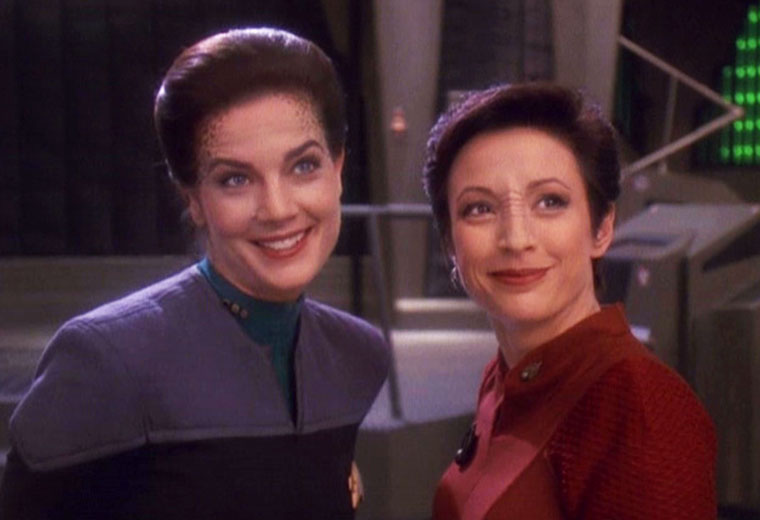
One of the best examples of a character who defied gender stereotypes in Deep Space Nine is Kira Nerys did become a very well written female character, yet the writers often had to carefully balance various facets of her character. Her romantic relationships often came across as an attempt to soften her stern nature as many of the men she fell for were blank sheets of paper, mild and sometimes ineffective. It would have been more fulfilling to see her in a relationship with someone who was as determined as her. Kira was at her best when she was defying Dukat and standing up to the Dominion because her competence was never in question: she was a guerilla fighter who becomes a legend on Cardassia, not based around her gender, but her skills in sabotage and her ruthlessness. When she works alongside Garak in the finale arc, her gender is never brought up not does he make a comment about her skills being impressive “for a woman” even though previous episodes imply that Cardassians tend to separate the genders in jobs: only one Cardassian Gul that we meet is a woman and dialogue seems to indicate women tend to dominate the sciences.
Both of the Daxes, Jadzia and Ezri, suffered from uneven writing. In the beginning of DS9, Jadzia came across as confident and sure of herself, able to channel her male predecessor, Curzon, to connect with Ben, working alongside him as an equal. Yet sometimes her attitude toward Quark and other male characters who try to romantically pursue her leaves the audience uncomfortable as she merely brushes it off, instead of actively saying or doing something. Compare this to when an alien demands Quark make him a holo-program with Kira as a sex object and she tampers with the program. Do Jadzia’s actions stem from Curzon being a womanizer and her having his memories? The revelation he originally rejected her from the Host training program based on his attraction to her makes it even more disgusting. Ezri has her characterization fast tracked due to the series ending and wrapping up several complex plot threads in a very short period of time. This left her struggling to insert herself into a closely knit group of literally battle tested allies. Her final romance with Bashir left a sour taste in many fans’ mouths since Julian had not been respectful of Jadzia rebuffing his repeated advances.
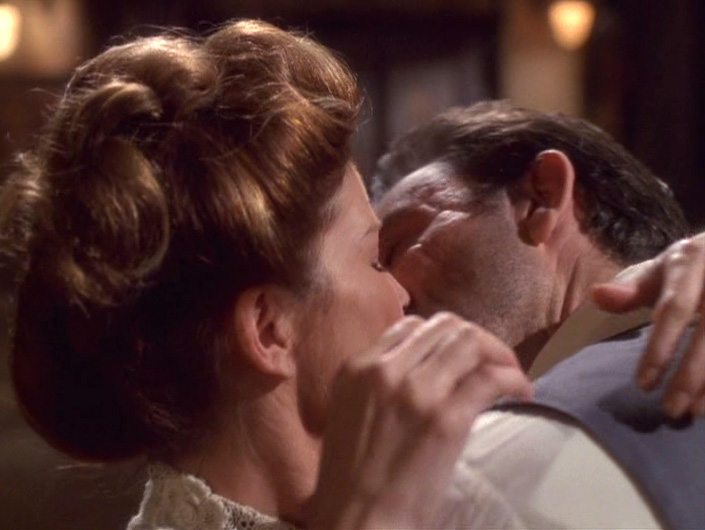
Captain Janeway was not the first female captain in Starfleet—several one scene/episode characters preceded her, but she was the most obvious and important. Yet she had to do it all, meaning she was dragged into many directions at once. Janeway had to be strong to command respect yet be nurturing to her crew, be stern without being overbearing, even her hairstyle had to fit these parameters, feminine yet responsible. Audiences often complained she had to do everything her predecessors did while being feminine without being too masculine, walking a tightrope of characterization. Some fans have criticized her relationships with holo-novel or holo-adventure men who are less interesting than paint. She even tries to reprogram one character to be her perfect man by removing personality traits she doesn’t like instead of trying to interact with him more to see if these traits were real deal breakers. It would have been much more interesting seeing two strong personalities—Janeway and Chakotay for example—work together to build a relationship rather than one partner being entirely dominant over the other; gender flipping the dominant versus submissive partner just switches gender inequality to the other one and still ignores nonbinary or gender-fluid people in relationships.
Engineer B’Elanna Torres avoided many gender stereotypes as she was written as a brilliant engineer, able to improvise when needed. Her romantic relationship with Tom Paris involved him undergoing character growth too, so that he could become more mature. Her feminine arc never reduced her personality to being a wife and mother so while she had found inner peace by the end of the series, she was still recognizably the fighter she was at the beginning. Compared to Keiko, B’Elanna’s motherhood adds to her character instead of overwhelming it. The latter has to process her own trauma related to her bi-species identity and how that shaped her relationships—familial and personal—which informed how she raised her daughter.
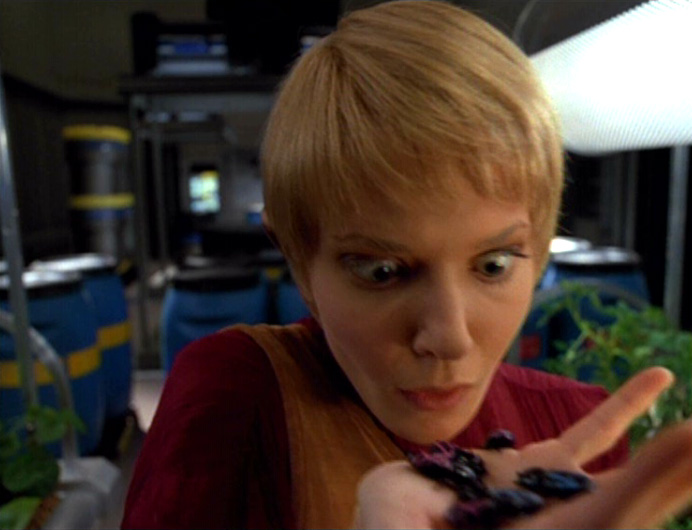
Sadly, Seven of Nine and Kes were not as well-developed. The former character did not receive better fulfillment until Picard as her role on Voyager was based around her alien-ness and sexuality. Trapped in tight catsuits (complete with corset and high heels) Seven’s arc of reclaiming her humanity did not end up as nuanced as it should have been as her struggles often focused of romantic and physical parts of a relationship, including the episode “The Raven” where she asked several crewmembers about sexuality in a very blunt and direct manner that was meant to be played as comedy yet felt incredibly awkward and inappropriate. Kes often came across as very naive and spent a large portion of the first season trying to calm down her needlessly boyfriend Neelix from being aggressive to any attractive man who talks to her. Combined with their huge age gap, it comes across as a very uneven relationship where Kes does all of the emotional labor in their relationship.
Even in the Kelvin timeline films, characters slide into gender stereotypes. Uhura and Spock have a romance in the movies, even when there were barely any hints towards that in TOS. Then Uhura seems to become very emotional in the relationship to the point it impacts her job. This is the embodiment of the trope of “women are too emotional to work in important jobs” that is older than Star Trek itself. It could even be said this very trope was embodied by Chapel in TOS in regards to Spock.
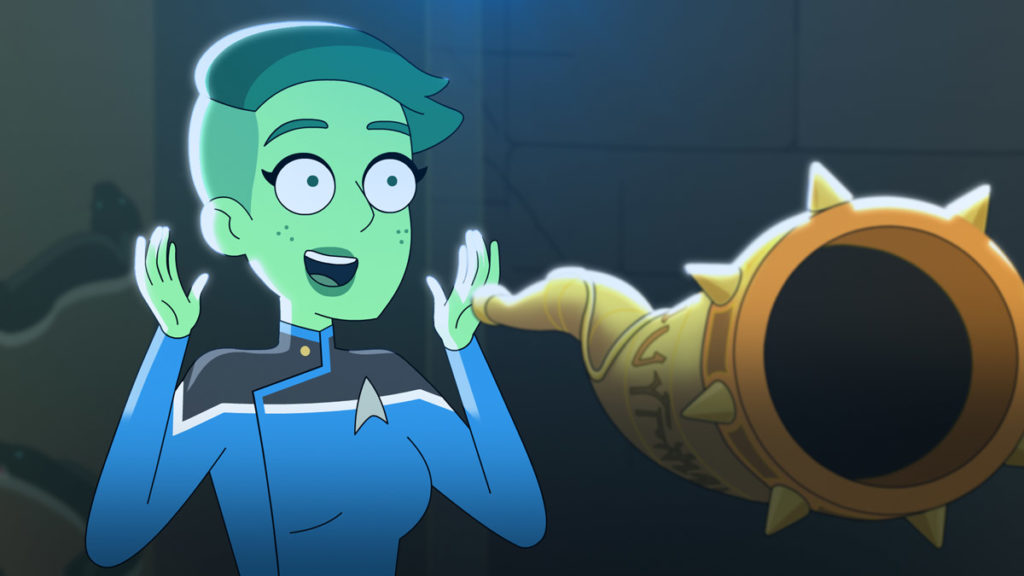
Lower Decks may be issuing in a new era in regards to gender stereotypes as D’Vana Tendi is written to overturn many of the stereotypes that Orion women embodied—eroticism, exoticism, orientalism, and so on. Tendi is hardworking and determined to the point she is promoted in the sciences division, heading toward command training. Her genuine enthusiasm and drive makes her charming and a likable genius who is so talented through skill and dedication, making her success more believable.
Gender stereotypes, embodied by characters like Chapel’s emotional ties to Spock that came to define her or Lwaxana being obsessed with getting married, seem to be one of the hardest things for Star Trek to overcome. Even over fifty years after it was first televised, several characters across the franchise end up being written in ways that reflect or worsen gender stereotypes—women being reduced to romantic props for male characters, being reduced to only being wives or mothers, or not being very complex characters at all. By writing female characters better and defying gender stereotypes, Star Trek will become better and better embody a utopia for all.